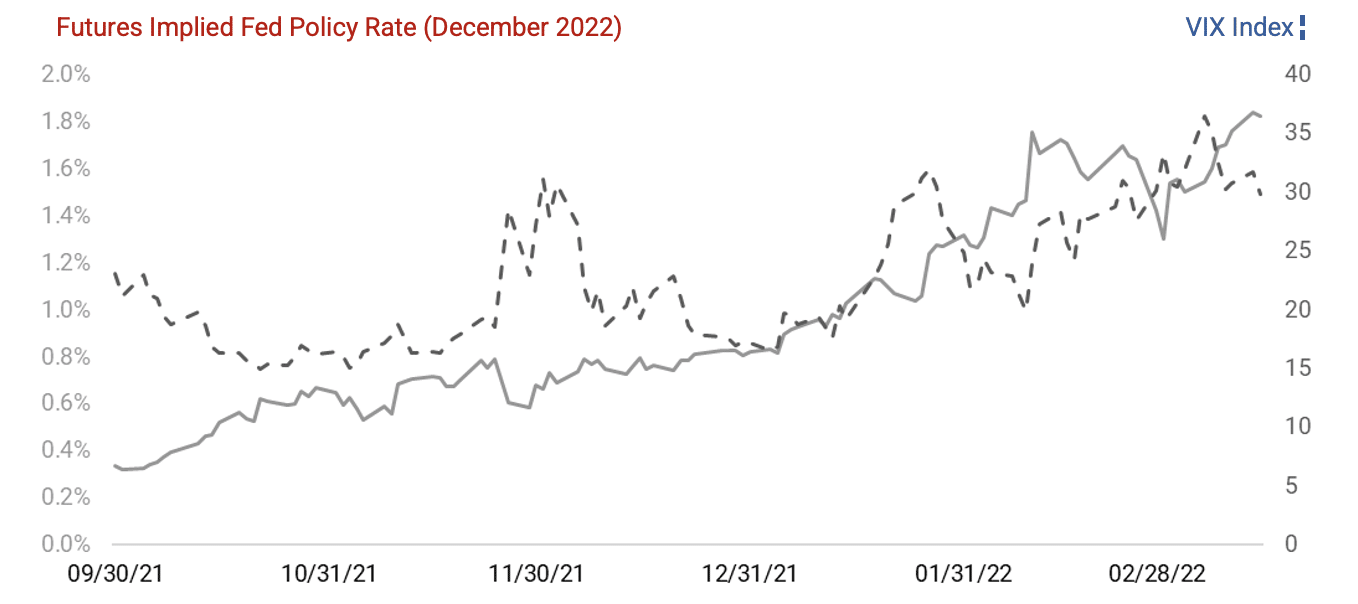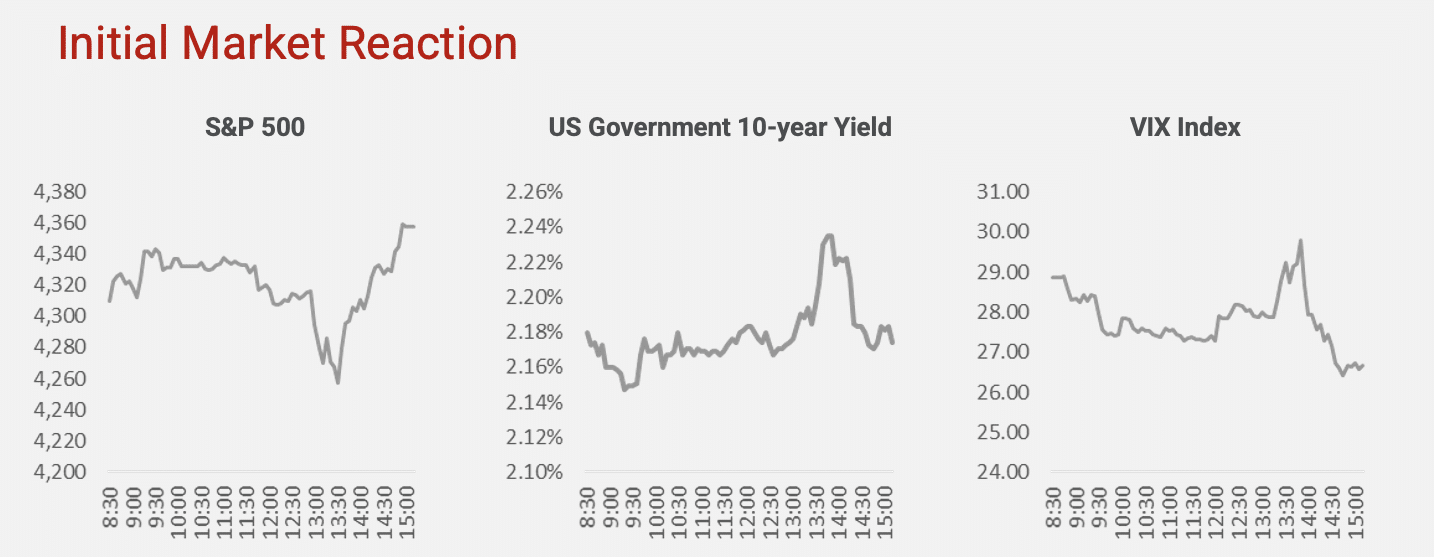Research Supplement: The Fed and Interest Rate Expectations
Wednesday, Mar 30, 2022
Summary
On March 15th, in a highly telegraphed move, the Fed took its first step in attempting to combat inflation. Recently, expectations of the Fed’s meeting have shifted around quite a bit, which can drive short-term equity volatility. With inflation and the Fed being key items for the market right now, it is worth keeping an eye on the market’s expectations through the remainder of the year.
•The Fed increased the target rate by a quarter percentage point, moving the upper bound from 0.25% to 0.50%.
•The initial market reaction was notable, with the S&P 500 gaining 2.24% over the day, after losing nearly 2% intraday, and the US government 10-year yield increasing to 2.18%.
•We can look at what is being priced into the market through Fed futures. The more the heatmaps at the bottom of the page change over time, the more volatility we can expect to seep into the broader market.
Market Expectations
Markets Tend to React to Changing Expectations
Since markets look towards the future, it’s not surprising to see equity market volatility rise with changing expectations for interest rate policy. The above graph shows the changing expectations for Fed policy at the end of 2022 compared to implied volatility of the S&P 500, measured by the VIX Index.
Images source: Helios Quantitative Research, Bloomberg
Important Disclosures:
The material presented includes information and opinions provided by a party not related to Thrivent Advisor Network. It has been obtained from sources deemed reliable; but no independent verification has been made, nor is its accuracy or completeness guaranteed. The opinions expressed may not necessarily represent those of Thrivent Advisor Network or its affiliates. They are provided solely for information purposes and are not to be construed as solicitations or offers to buy or sell any products, securities, or services. They also do not include all fees or expenses that may be incurred by investing in specific products. Past performance is no guarantee of future results. Investments will fluctuate and when redeemed may be worth more or less than when originally invested. You cannot invest directly in an index. The opinions expressed are subject to change as subsequent conditions vary. Thrivent Advisor Network and its affiliates accept no liability for loss or damage of any kind arising from the use of this information.
This communication may include forward looking statements. Specific forward-looking statements can be identified by the fact that they do not relate strictly to historical or current facts and include, without limitation, words such as “may,” “will,” “expects,” “believes,” “anticipates,” “plans,” “estimates,” “projects,” “targets,” “forecasts,” “seeks,” “could’” or the negative of such terms or other variations on such terms or comparable terminology. These statements are not guarantees of future performance and involve risks, uncertainties, assumptions and other factors that are difficult to predict and that could cause actual results to differ materially
Index Benchmarks presented within this report may not reflect factors relevant for your portfolio or your unique risks, goals or investment objectives. Past performance of an index is not an indication or guarantee of future results. It is not possible to invest directly in an index.
The S&P 500® Index, or the Standard & Poor’s 500® Index, is a market-capitalization-weighted index of the 500 largest U.S. publicly traded companies.
The CBOE Volatility Index®, or VIX, is a real-time market index representing the market’s expectations for volatility over the coming 30 days.




